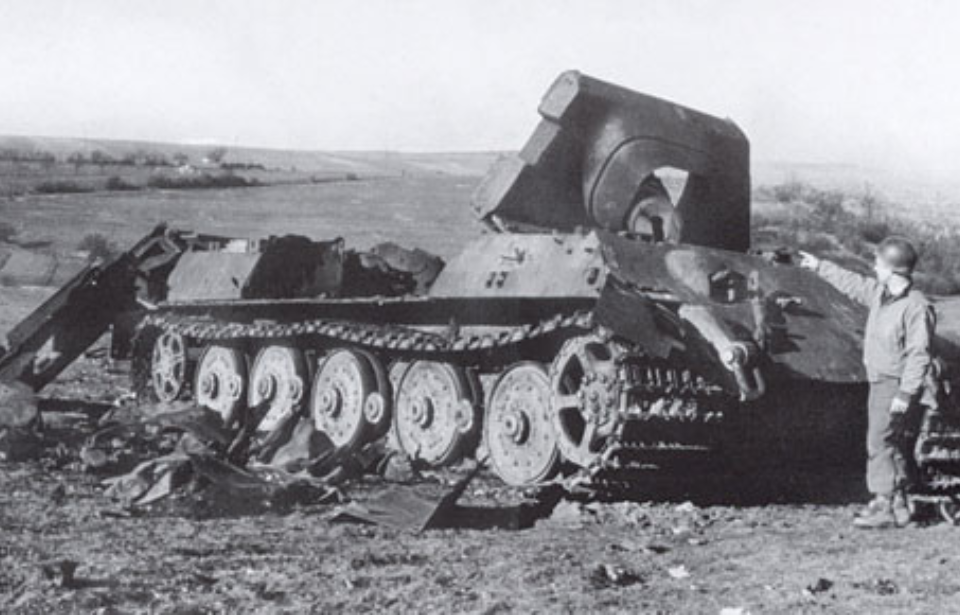Operation Nordwind was the last large-scale German offensive on the Western Front of the Second World War. Despite this, it continues to live in the shadow of the Battle of the Bulge. The mission was separate from the latter offensive, and was designed by the German Führer himself, with the aim being to cripple the Allied forces as much as possible.
Battle of the Bulge
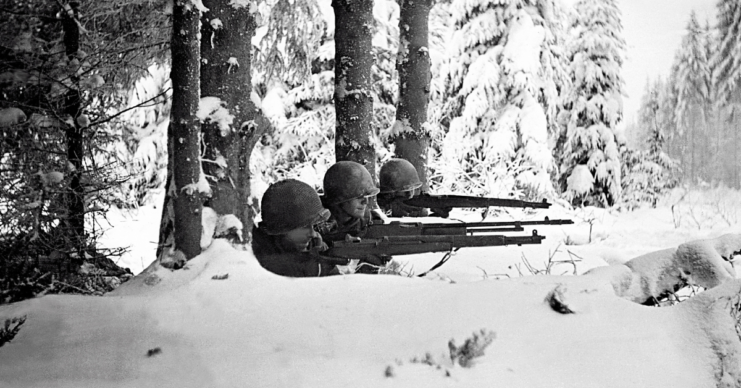
Operation Nordwind was, in many respects, a mini Battle of the Bulge. The German Army attempted to incorporate the lessons they’d learned in the Ardennes at another stretch of weakly-defended Allied positions, in the hopes of a decisive breakthrough.
The Battle of the Bulge was an unsuccessful German attempt to push the Allies back from German home territory. During the summer of 1944, following the Battle of Normandy, the Allies moved across northern France into Belgium, but lost momentum.
On December 16, 1944, the Germans launched a 200,000-man surprise attack in the Ardennes. The location was chosen because it was hilly, rugged and wooded, so a large-scale offensive wouldn’t be expected. The Allies, who felt victory was within reach, had become complacent since the D-Day landings that June.
The aims of the German counteroffensive were extensive. They wanted to break through to Antwerp, which was the dividing line between the American and British armies, and seize the Allied supply port there. If they could cut off the British Army from the American forces and their supplies, the Germans figured they could crush them. If they accomplished this, the Führer was convinced the war-weary American and British public would demand a negotiated settlement with Germany.
Initially, the Battle of the Bulge was a success for the Germans. However, by December 21, 1944, it was clear their momentum was dwindling. Although the Germans were able to advance as much as 50 miles in some areas, their advance was inevitably halted, falling short of its objective. By January 1945, the Allies had scored a decisive victory – the Germans had suffered over 100,000 casualties, while the Americans had experienced 81,000.
Strategy for Operation Nordwind
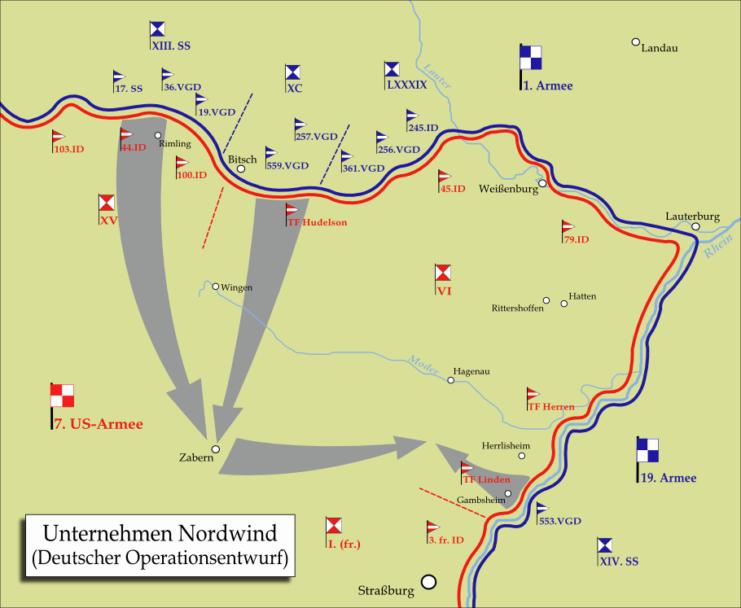
When it became apparent that the Ardennes Offensive wasn’t going to achieve a breakthrough, the Führer began to look at Alsace. The French province was of great symbolic importance to the Germans, as it and the neigboring province of Lorraine had been under German control on and off throughout history. It was believed that recapturing Alsace would be a major propaganda victory.
Alsace was also chosen because, during the Battle of the Bulge, the US Seventh Army had been forced to take over the Third Army’s position in Alsace, which spread it thin over the 68-mile frontline. Operating to the south was the French First Army, which had formed together with the Seventh to create the Sixth Army Group. commanded by Gen. Jacob Devers.
The proposed plan for Operation Nordwind involved the German First Army, led by General of the Infantry Hans von Obstfelder. The plan was for the First Army to launch a major push into France with four refitted infantry divisions, who would attack east of Bitche, through the mountains.
The First Army would then link up and move northward with the German Nineteenth Army, which was locked in a pocket around Colmar. They would meet east of the Saverne Gap, recapture the city of Strasbourg and trap the US Seventh Army in northern Alsace.
Unlike the Battle of the Bulge, Operation Nordwind would be a local offensive; the Führer realized launching a massive offensive in the West was no longer feasible. On December 28, 1944, he told his generals, “This attack has a very clear objective, namely the destruction of the enemy forces. There is not a matter of prestige involved here. It is a matter of destroying and exterminating the enemy forces wherever we find them.”
The primary objective of Operation Nordwind was simple: destroy as many enemy units as possible. If it was successful, it would allow for a follow-up attack, dubbed Unternehmen Zahnarzt (“Operation Dentist”), against the rear of Gen.George Patton‘s Third Army.
Beginning of Operation Nordwind
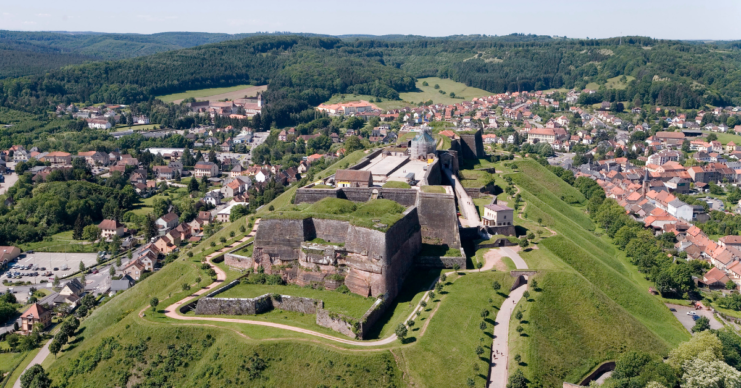
December 31, 1944 was chosen as the start date for Operation Nordwind. The Germans hoped the Americans would celebrate New Year’s Eve and be reasonably relaxed in their positions. Half an hour before midnight, Operation Nordwind was launched.
The opening attack came from three corps of the German First Army, Heeresgruppe G. The 17th SS-Panzergrenadier-Division “Götz von Berlichingen” and the 36th Volksgrenadier Division attacked the US 44th and 100th Infantry Divisions near Bitche. They made narrow inroads against the 44th’s line near Rimling during fighting characterized by constant US counterattacks that were supported by French armor and Allied air attacks.
After four days of fighting, the Germans’ initial offensive had slowed. They’d gained about 10 miles and were heading directly towards the Saverne Gap to link up with the Nineteenth Army. Meanwhile, to the east of Bitche, they took advantage of the elements to hit American lines. This advance came within 10 miles of the Saverne Gap, but was slowed by Allied resistance – American commanders shuffled around different units from elsewhere to plug holes and block advance routes.
By January 5, 1945, the German advances had failed to break Allied lines or capture crucial territory, rendering Operation Nordwind a failure. However, it’s important to remember that the Ardennes Offensive was still occurring during this time.
End of Operation Nordwind
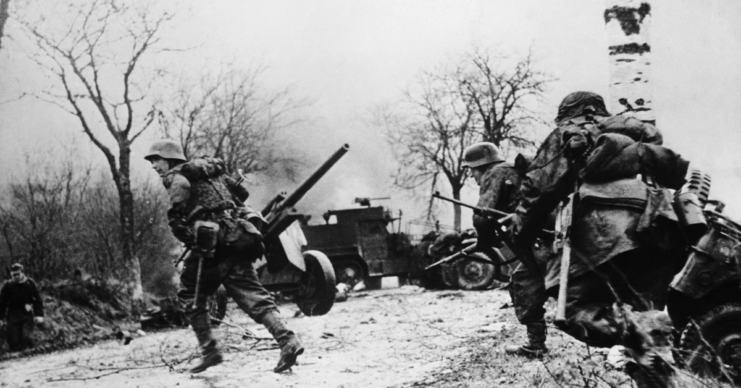
With the Ardennes Offensive collapsing, German forces continued to attack Alsace. A division pushed across the Rhine to the south to take a 10-mile bridgehead near Gambsheim, north of Strasbourg. On January 7, 1945, the Germans launched another attack, gaining ground to the edge of the Forest of Haguenau.
Despite the German Army making minor gains, American armored divisions continued to fill the holes. During the night of January 24–25, Allied counterattacks by the US 222nd Infantry Regiment stopped the German advance near Haguenau. They were now facing only marginal gains at a huge human cost, forcing the Führer to inevitably abandoned the offensive and transfer many of the involved units to the Eastern Front.
More from us: Athenian Hoplites: An Overlooked Part Of Athens’ Success In The Ancient World
Although overshadowed by the Battle of the Bulge, Operation Nordwind was a decisive win for the Allies. The Führer hoped the mission would infuse new life into the German war effort. However, the Allies were able to hold both Alsace and Strasbourg, and eventually went on to capture Germany in the spring of 1945.
